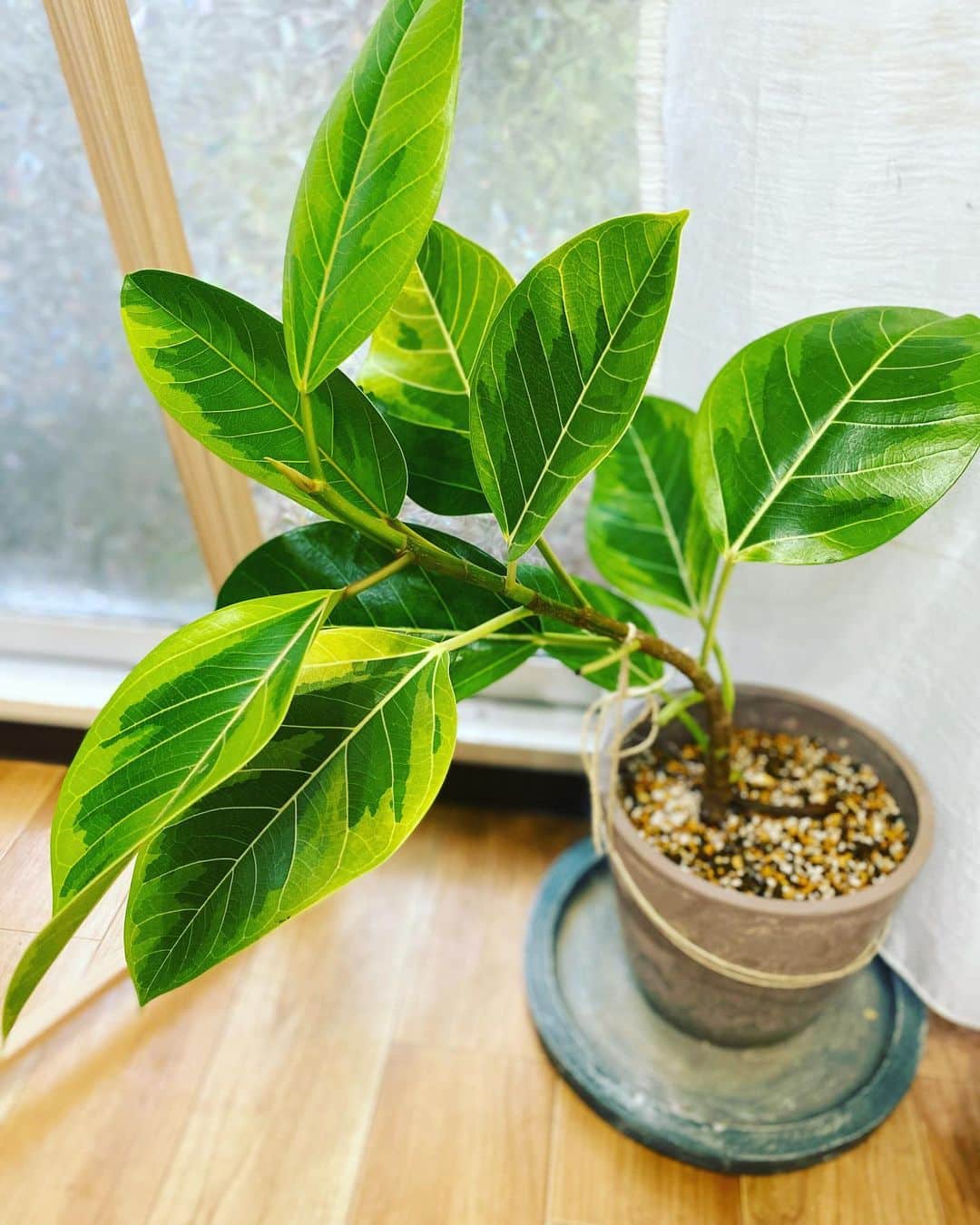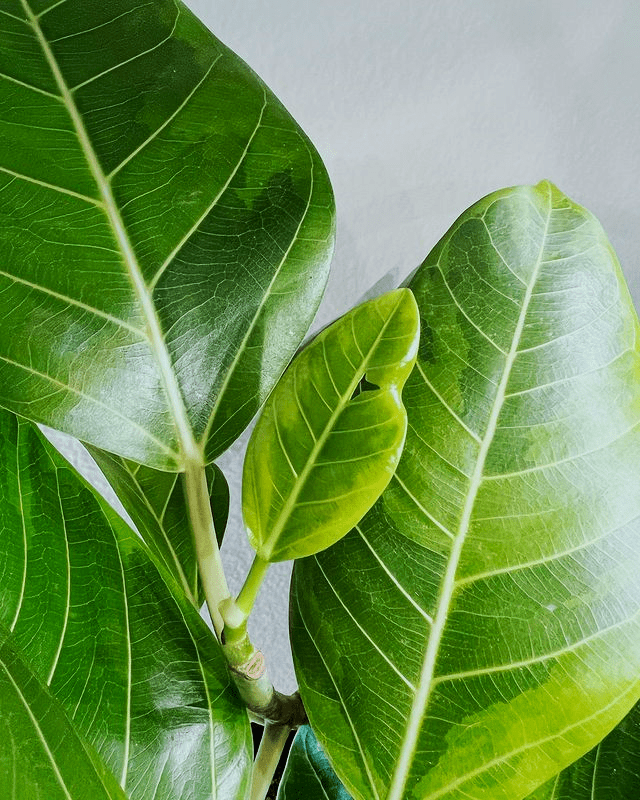Virtually maintenance-free, Ficus Altissima suffers premature leaf drops and yellow or browning foliage under improper care routine.
To ensure the ideal care of Ficus Altissima, continue reading till the end and enjoy aesthetic green foliage with air purifying benefits.
Table of Contents Show
Ficus Altissima [Plant Overview]
Commonly known as the ‘Council Tree,’ ‘Lofty Fig,’ or ‘False Banyan,’ it is a flowering fig tree specimen known for its signature variegated leaves.
However, it is often confused with other Ficus varieties like Ficus Altissima ‘Yellow Gem,’ which have similar variegations in their foliage.

Let’s have a quick look at the overview of the Ficus Altissima.
| Feature(s) | Description(s) |
|---|---|
| Scientific Name | Ficus altissima |
| Status & Ecology | Life Cycle: Evergreen Perennial USDA Zones : 9-12 Native Zone: Tropical & Sub-Tropical Asia |
| Family | Moraceae |
| Growth Rate | Fast |
| Plant Height | Grows over 25 feet within a decade |
| Leaf | Shape: Oval-shaped with pointy tips Color: Deep green with variegation of lime-green yellow Texture: Glossy & Smooth |
| Blooms | White or Creamy White |
| Toxicity | Toxic to humans, dogs and cats. |
Complete Guide to Ficus Altissima Care
Being a tropical evergreen tree, Ficus Altissima prefers a care condition similar to its natural habitat.
Thus, aim to give them home-like care. To do so, look at this quick Ficus Altissima care hack.

1. Sunlight & Temperature
Ficus Altissima thrives in warm temperatures of 60-80°F while sitting under indirect sunlight.
But remember, they get scorched by direct sunlight. Scorched leaves appear pale yellow with brown spots and crispy dry tips.
Additionally, excess exposure and heat can cause Ficus Altissima to lose its signature variegated pattern.
Likewise, low light and cold drafts (<60°F) push the growth causing leggy, lanky, wilting, droopy foliage.
Thus, the aim is to use artificial grow lamps for about 6-8 hours in winter.
Similarly, use frost blankets and heat pads or add straw mulch around the plant to keep it warm.
2. Watering & Humidity
Ficus Altissima is a moderate drought-tolerant plant but prefers relatively higher 60-80% humidity.
Otherwise, aim to water them once the topsoil feels dry. For the best way, water thoroughly till the water flows into the saucer.
Ficus Altissima is prone to get overwatered with more severe consequences. Dehydrated Altissima often has yellow leaves.

Contrarily, low humidity and scarce water cause wilted, droopy, brown leaves with fragile tips.
3. Soil & Fertilizer
Ficus Altissima thrives in a potting mix with natural, well-draining elements enriched with all nutrients.
Likewise, fertilize them every month using balanced fertilizer in spring and summer to replenish the essential nutrients in the soil.
But cut back fertilization in winter to avoid overfertilization issues. Overfertilization often results in chemical burns from salt build-ups, root rot, and brown spots.
Meanwhile, nutrient-deficient Altissima shows leggy or stunted growth with weak, lanky stems.
Also, aim for nitrous fertilizer to encourage rich green, variegated leaves of the plant.
4. Potting & Repotting
Ficus Altissima requires repotting every 1-2 years when it becomes root-bound.
Generally, repotting signs include roots poking out the drain holes, stunted growth, leaf drops, and sludgy potting soil.
Similarly, repotting becomes an absolute need when they are infected with pests or diseases.
Some pests and diseases that Ficus Altissima suffers from are aphids, mealybugs, spider mites, scales, bacterial, angular leaf spots, and Anthracnose.
Carefully repot infected plants after administering copper-rich fungicides and removing damaged parts.
Also, ensure to drill multiple holes in the pot to facilitate proper drainage.
5. Annual Pruning
Do not be shy about pruning Ficus Altissima to keep them neat and encourage bushier foliage.
But pruning Ficus Altissima is crucial whenever pests like mealybug, whitefly, spider mite, and thrips infect it.
Carefully prune all plant parts with a sterilized pruner and apply neem oil to prevent pests.
Also, do not prune more than one-third of the plant at one swing to avoid critical pruning stress.
Annual pruning of dead and lanky branches will encourage lush foliage. Wait to prune until late winter or early spring before new growth begins.
About Ficus Altissima Growth
As a tropical plant, Ficus Altissima proliferates in warm and sultry forests but slows down when planted indoors.
They share an epiphytic growth habit in the juvenile stage in their natural habitat but later grow independently.
Additionally, spring and summer are the active growing season for Altissima, but they stay dormant during fall and winter.
Moreover, Altissima is mainly grown for its aesthetic variegated leaves featuring deep green and lime-green yellow combo.
They have oval-shaped pointy leaves featuring bright, distinct veins with a glossy smooth texture.

Due to its resemblance, Ficus Altissima is often mistaken as a Fig Rubber Tree or Fiddle-Leaf Fig.
To distinguish them, look for the reddish tint more pronounced in the Rubber Tree leaves.
Ficus Altissima gives out signature white flowers that are later open-pollinated to produce fruits.
Due to the absence of pollinating wasps when grown indoors, your Ficus plant is very unlikely to bear a flower.
Propagating Ficus Altissima
You can propagate Ficus Altissima using stem cuttings and air layering.
Additionally, it’s best to propagate Ficus Altissima in early spring or summer when it is actively growing.
However, seed germination and tissue culturing are other sophisticated propagation methods.
1. Propagate Via Stem Cuttings
It involves cutting the healthy stem with foliage and growing it in new potting soil or water.
- Take a healthy stem and cut a section close to the root.
- Remove the bottom leaves and place the cutting in a jar filled with rooting hormone solution.
- Wait about 3-4 weeks before you start seeing new roots.
- Prepare a small terracotta pot (6 inches wide and deep) and transplant the rooted cutting.
- Moisten the plant by thoroughly watering it.
- Place the pot in a warm, humid room with medium indirect sunlight.
Alternatively, you can immediately root the stem cutting in the potting soil.
Instead of putting it into the water, dip the cut in rooting hormone and plant it in moist soil.
New roots should sprout within a month, and once they outgrow the pot, proceed with repotting steps.
2. Propagate Via Air Layering
Air layering is an alternative and quicker method for growing new vegetation while still attached to the mother plant.
However, it may only apply to outdoor Ficus Altissima trees to support additional growth.
- Peeling the bark of a robust branch, wrap the sphagnum moss around the cut and secure it with floral pins.
- Cover the area with plastic wrap to preserve the moisture needed for growth.
- Poke holes on the wrap to ensure air circulation.
- It may take around 90-120 days for the root system to become robust and support the entire plant.
- Once you have roots, remove the new growth and the new roots and transplant them into a pot.
Toxicity of Ficus Altissima
According to Pet Poison, Ficus Altissima, a cousin of the Fiddle Leaf Fig, is toxic to pets like cats and dogs like other Fig varieties.
Ficus Altissima leaves contain an irritating milky white sap causing allergic reactions on the skin.
The concentration of toxins is high around the veins of the stem, making those parts more toxic.
Accidental ingestion can cause oral irritation, gastrointestinal discomfort, vomiting, diarrhea, hypersalivation, convulsions, and vomiting.
Furthermore, the Lofty Fig is mildly toxic to humans as well. So, be aware of them while pruning and repotting them.
The situation can worsen if consumed in a larger amount. Here are some helplines you can rely on if you suspect your pet or children ate the parts of a Council Tree.
- American Poison Control Center (APCC): (888) 426-4435
- National Capital Poison Center: (800) 222-1222
Ficus Altissima Vs. Ficus Audrey
Almost all the Ficus species have similar foliage patterns, arrangements, and leaf shapes.

First, Audrey is a variety of Ficus benghalensis, while Ficus Altissima is a true Ficus, but both belong to the same plant family, the Moraceae.
Both have equally toxic milky white latex, fatal in large amounts for humans and pets. They also originate from similar tropical regions.
But the leaves of Audrey are dark to light green with greenish-white veins.
In contrast, the leaves of Altissima are pale to light green having marginal yellow variegations and veins with a faint yellow hue and pointy tips.
From Editorial Team
Conclusion!
Place your Ficus in a bright indirect light aided with a flexible watering routine for flawless growth.
Cut back basic care like fertilization and watering frequency in winter while ensuring optimal sunlight.


